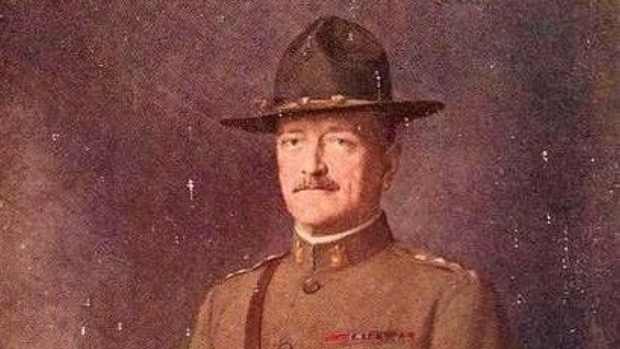Analysis of "Love and Friendship" by Emily Brontë
Summary of Emily Brontë's "Love and Friendship"
"Love and Friendship" is a short rhyming poem that focuses on romantic love and serious friendship. The former is likened to a rose-briar, the latter to a holly tree. One is beautiful but fleeting, the other durable and evergreen.
The poem uses extended metaphors—both rose and holly—to highlight the differences between love and friendship as the seasons change.
- Love is seen as fickle and changeable, beautiful but not long-lasting. A rose may be a lovely thing through spring and summer, but once the cold weather arrives, it suffers and eventually decays.
- Friendship, in contrast, withstands what the season can throw at it and is more stable. The holly tree, with its evergreen leaves, is steadfast and constant.
- So the seasons represent the time and the environment in which love and friendship exist, as well as being the challenge for both.
Emily and the Other Brontë Sisters
Emily Brontë (1818-1848) is best known for her novel Wuthering Heights, often said to be one of the greatest in the English language, but she started writing poems with her sisters Anne and Charlotte when a young girl.
She and Anne created a fantasy world called Gondal, an island set in the North Pacific. They wrote pieces for the various characters, including poems, and kept this imaginary world going right into adulthood.
A shy, retiring person who loved animals, Emily was often to be found walking the moorland near the house in Haworth, Yorkshire, drawing on the scenery, flora and fauna as inspiration for her poems and novels.
The Brontë sisters, always very creative, published their first poetry book together in 1846: Poems by Currer, Ellis and Acton Bell, using male names because, at that time, female authors were generally not published.
"Love and Friendship" uses plain language, poetic devices and varied rhythm to neatly compare and contrast. By focusing on the natural world, Emily Brontë widens the argument, choosing two common enough plants to create a rare yet simple poem.
"Love and Friendship"
Love is like the wild rose-briar,
Friendship like the holly-tree—
The holly is dark when the rose-briar blooms
But which will bloom most constantly?
The wild rose-briar is sweet in spring,
Its summer blossoms scent the air;
Yet wait till winter comes again
And who will call the wild-briar fair?
Then scorn the silly rose-wreath now
And deck thee with the holly’s sheen,
That when December blights thy brow
He still may leave thy garland green.
Analysis of "Love and Friendship" Stanza-by-Stanza
"Love and Friendship" is a short, twelve-line poem split into three equal stanzas, quatrains, and stands formal and neat on the page.
The rhyme scheme for the first two stanzas is abcb (with a half-rhyme spring/again in the second), but the third stanza has abab with full rhyme.
This change in the rhyming reflects the idea that love is an uncertain thing, often altering with time, but friendship is more constant and familiar.
Note that enjambment—when a line runs on into the next without punctuation pausing—occurs in a regular pattern, in lines 3, 7 and 11 helping with momentum and keeping the sense.
The personification of December in the third stanza (He still may leave thy garland ...)
First Stanza
The initial two similes—Love is like ... Friendship like—set the scene for what is essentially an argument for the constancy of friendship over the inconstancy of love.
To help move the argument along and offer the reader the chance to think about the nature of both, the first stanza ends with a question. Just which is the more constant, love or friendship?
There may be darkness associated with holly, especially when contrasted with a rose flower, but overall, which one will be more consistent? We don't think of holly as blooming, but the holly tree does have flowers, tiny white ones.
The rose is traditionally seen as a symbol of love, romantic love in particular, as made famous by one Robert Burns in his 1794 poem "My Love is Like a Red, Red Rose", which Emily Brontë is likely to have read.
Second Stanza
The second stanza concentrates on the qualities of the rose-briar, love, which is sweet and passionate in the warmer months when things are going well but soon loses its attraction when the cold weather arrives.
That is, love might be exciting and colourful for a while, giving the impression that all is hunky-dory, but what happens if challenges arise, which they certainly will.
Again, there is a question posed rhetorically, aimed at those who perhaps saw love as the most beautiful thing. What do they see now that love has unravelled with the onset of harsher conditions?
Third Stanza
The speaker seems to be answering that second stanza's question—they scorn the silly rose-wreath now—love is described as silly, worthy of scorn (ridicule) because it has turned from a bloom into a wreath, associated with death and funerals.
That second line has the verb to deck in it which means to decorate (as in the Christmas carol Deck the halls with boughs of holly) with the holly's sheen—that ever-present shine that holly leaves have throughout the year.
And to confirm the steadfastness of friendship, the last two lines suggest that even when things are at their worst—when December blights thy brow—when love is dead, when cold conditions challenge, even these cannot undermine the strength of friendship.
To blight is to infect or to cause distress, and a garland is a wreath or circle of flowers used mainly as a decoration at weddings and so forth.
What Is the Metre (Meter in American English)?
"Love and Friendship" has an iambic base to its rhythm, which is an unstressed syllable followed by a stressed syllable (daDUM), and there are often four feet per line, making this metre iambic tetrameter.
However, there are exceptions to this iambic rule, and it is this variety that gives the poem extra spice when it comes to reading through it and taking note of the beats and stresses and number of syllables.
Let's get a closer look at each line:
Love is / like the / wild rose-briar,
Friendship / like the / holly-tree—
The hol / ly is / dark when / the rose- / briar blooms
But which / will bloom / most con / stantly?
The wild / rose-briar / is sweet / in spring,
Its sum / mer bloss / oms scent / the air;
Yet wait / till win / ter comes / again
And who / will call / the wild- / briar fair?
Then scorn / the sil / ly rose- / wreath now
And deck / thee with / the hol / ly’s sheen,
That when / Decem / ber blights / thy brow
He still / may leave / thy gar / land green.
The start is unusual, a double trochee kicking off the first stanza (DUMda DUMda) with the stress on the first syllable, an inverse iamb, the second line following the same pattern.
First Stanza
Note the dactyls that end these first two lines (DUMdada) which is a stressed syllable followed by two syllables that fade away, relatively unstressed.
The third line is the longest in the poem at 10 syllables and has a trochee and a pyrrhic (daDUM) which is quieter than the others stress-wise.
The last line also tapers away at the end with a pyrrhic which follows the three regular iambs.
Second Stanza
This is all iambic tetrameter, four feet, eight syllables in each line.
Third Stanza
Again, all iambic tetrameter.
Sources
www.poetryfoundation.org
The Poetry Handbook, John Lennard, OUP, 2005
The Hand of the Poet, Rizzoli, 1997
www.bl.uk
© 2020 Andrew Spacey



